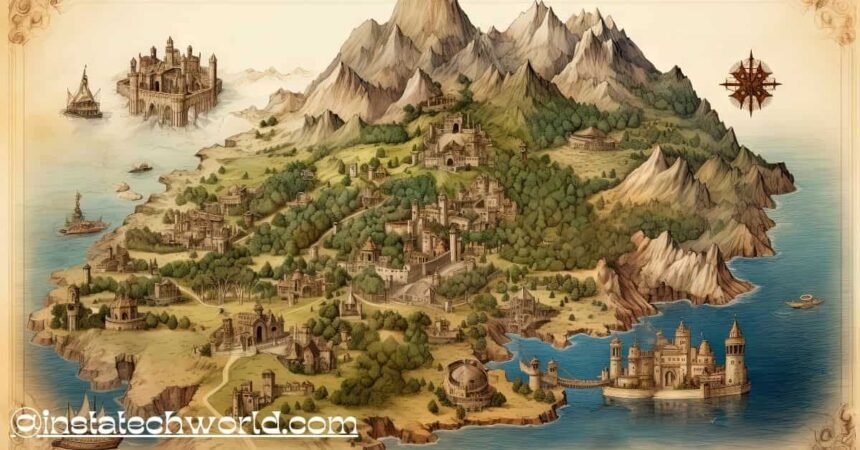The region known as “Levantului”—a poetic variation of the Levant—echoes across centuries of history, echoing from the shores of the Eastern Mediterranean through deserts, mountains, and fertile valleys.
It is more than just a geographic label; Levantului is a symbolic term representing layers of cultural evolution, religious coexistence, and historical turbulence. Home to ancient cities, sacred shrines, and diverse ethnic groups, the Levant has been the heart of human development, innovation, and conflict for millennia.
In this in-depth article, we will explore the full scope of Levantului, diving into its past civilizations, modern transformations, cultural wealth, and enduring global relevance. Whether you’re an academic, a traveler, or a curious mind, this guide will provide a richly woven narrative of the Levantului’s many dimensions.
Understanding Levantului – A Name and a Region
The name “Levantului” is derived from the broader term “Levant,” itself stemming from the Latin levare, meaning “to rise,” a reference to the sun rising in the East.
It traditionally refers to the Eastern Mediterranean lands, primarily Syria, Lebanon, Israel, Palestine, Jordan, and parts of Turkey and Iraq. Levantului is thus a more romantic and expansive framing of this ancient land—one that encompasses not just geography but shared legacies.
Defining the Geographic Landscape

Levantului stretches along the eastern Mediterranean coast, an area where diverse terrains collide. From coastal plains to inland deserts, high mountains to river valleys, the geography of this region is as varied as its cultures. The primary countries and regions associated with Levantului include:
- Syria
- Lebanon
- Jordan
- Israel
- Palestine
- South-eastern Turkey (especially Hatay Province)
- Western Iraq
Despite differing modern political boundaries, these areas share historical roots that date back to prehistoric times.
The Historical Depth of Levantului
Ancient Settlements and Early Civilizations
Levantului is one of the earliest known cradles of human civilization. During the Neolithic era (c. 10,000 BCE), inhabitants began transitioning from nomadic to settled lifestyles. Towns like Jericho—perhaps the world’s oldest continuously inhabited city—highlight the importance of the region in the global shift toward agriculture and urbanization.
Archaeological discoveries in Byblos, Ugarit, and Aleppo reveal organized societies with trade, religion, and writing systems. These early cities laid the foundation for later civilizations.
Civilizations that Shaped Levantului
- Phoenicians: Seafaring traders who spread their alphabetic system across the Mediterranean. Cities like Tyre and Sidon were their cultural centers.
- Canaanites and Israelites: Indigenous groups that contributed to both the cultural and religious fabric of Levantului.
- Egyptians: Their influence was felt especially in trade and military campaigns that extended into the Levant.
- Assyrians and Babylonians: Powerful empires that dominated large swaths of Levantului and reshaped cities and societies.
- Persians, Greeks, and Romans: These empires brought administrative systems, language, infrastructure, and culture.
- Byzantines and Crusaders: Their legacy is evident in the region’s Christian heritage and architecture.
- Ottomans: Controlled Levantului for centuries, leaving a strong mark on governance, architecture, and cultural identity.
Levantului as a Religious Nexus
No other region plays a more central role in the world’s major monotheistic religions. Levantului is the spiritual heartland for Judaism, Christianity, and Islam. Sacred cities like Jerusalem, Nazareth, Bethlehem, and Damascus are pivotal to the religious histories of billions.
- Judaism: Jerusalem’s Temple Mount and the Western Wall are sacred sites.
- Christianity: Jesus’ life and ministry took place largely in Levantului. Pilgrimage sites abound in Nazareth, the Sea of Galilee, and Bethlehem.
- Islam: Jerusalem houses the Al-Aqsa Mosque, the third-holiest site in Islam.
In addition, religious minorities such as the Druze, Alawites, Samaritans, and numerous Christian sects enrich Levantului’s religious complexity.
Cultural Diversity and Daily Life in Levantului

Linguistic Landscape
Arabic is widely spoken, but dialects differ from city to city. Hebrew, Turkish, Kurdish, Armenian, and Aramaic are also present, showcasing a deep linguistic mosaic. French and English have remained influential due to past colonial mandates and modern globalization.
Culinary Traditions
Levantului is a gastronomic paradise. Key dishes include:
- Hummus and Baba Ghanoush
- Falafel and Shawarma
- Tabbouleh, Fattoush, and Manakish
- Baklava, Kanafeh, and Maamoul
These recipes are passed down through generations, reflecting the fusion of cultures and spices native to the region.
Arts and Expression
The arts thrive in Levantului. From traditional music using the oud and qanun, to modern pop, hip-hop, and rap, music is a tool of expression. Visual arts, calligraphy, embroidery, and storytelling are equally rich, with authors like Kahlil Gibran gaining global fame.
Levantului’s Geographical Riches
Climate and Topography
The region boasts a Mediterranean climate along the coast, while inland regions experience arid and semi-arid conditions. The Bekaa Valley, Jordan River, and Anti-Lebanon Mountains provide vital agricultural and freshwater resources.
Natural Resources
- Water: The Jordan River and underground aquifers are lifelines.
- Oil and Gas: Offshore gas fields in the Eastern Mediterranean hold economic potential.
- Phosphate and agricultural lands in Jordan and Syria contribute to local economies.
Levantului in the 20th and 21st Centuries
Post-Ottoman and Colonial Influence
After World War I, the Ottoman Empire dissolved, and the Levant was divided into French and British mandates. These foreign-imposed borders often ignored ethnic and sectarian realities, seeding future conflicts.
- Sykes-Picot Agreement: A secret treaty that partitioned the Ottoman lands between Britain and France.
- Mandate System: Lebanon and Syria came under French control, while Palestine, Jordan, and Iraq were administered by the British.
Independence and New Conflicts
From the mid-20th century onwards, Levantului became a focal point of global attention:
- The Arab-Israeli Conflict has dominated headlines for decades.
- Lebanon’s Civil War (1975-1990) brought widespread destruction and reshaped regional alliances.
- The Syrian Civil War, which began in 2011, has led to humanitarian crises and global migration waves.
Modern Day Levantului – Challenges and Hope
Ongoing Challenges
- Political Instability: Weak governments and foreign influence continue to affect governance.
- Economic Hardship: High unemployment, inflation, and underdevelopment plague many areas.
- Refugee Crisis: Millions have been displaced, especially due to the Syrian conflict.
- Environmental Stress: Water scarcity and climate change are real threats.
Signs of Resilience and Innovation
Despite challenges, Levantului shows signs of remarkable resilience:
- Tech Startups in Israel and Lebanon
- Sustainable agriculture and eco-tourism in Jordan
- Cultural revival movements in Syria and Palestine
- Diaspora support networks across the globe
Conclusion – Levantului’s Enduring Legacy
Levantului is not just a place on the map—it is a story, a legacy, and a mirror reflecting the beauty and struggles of humanity. From its Neolithic roots to its digital-era transformations, Levantului continues to inspire, challenge, and connect the world.
In the face of adversity, the people of Levantului hold onto traditions, innovate new futures, and build bridges across cultures and continents. Understanding Levantului is essential not just to Middle Eastern studies, but to understanding human civilization as a whole.
FAQ – Levantului Explained
What is Levantului?
Levantului is a term referring to the historically rich Eastern Mediterranean region, including parts of Syria, Lebanon, Jordan, Israel, Palestine, Turkey, and Iraq.
Why is Levantului important?
It is a cradle of civilizations, a religious heartland, and a strategic political region that has influenced global history, culture, and geopolitics.
What are some key cultural elements of Levantului?
Religious diversity, rich cuisine, multilingualism, ancient arts, and a history of coexistence and conflict.
Is Levantului still relevant today?
Yes—economically, culturally, and politically, Levantului plays a major role in regional and global affairs.
What are the biggest challenges facing Levantului today?
Political instability, refugee crises, environmental issues, and economic struggles continue to challenge the region.








